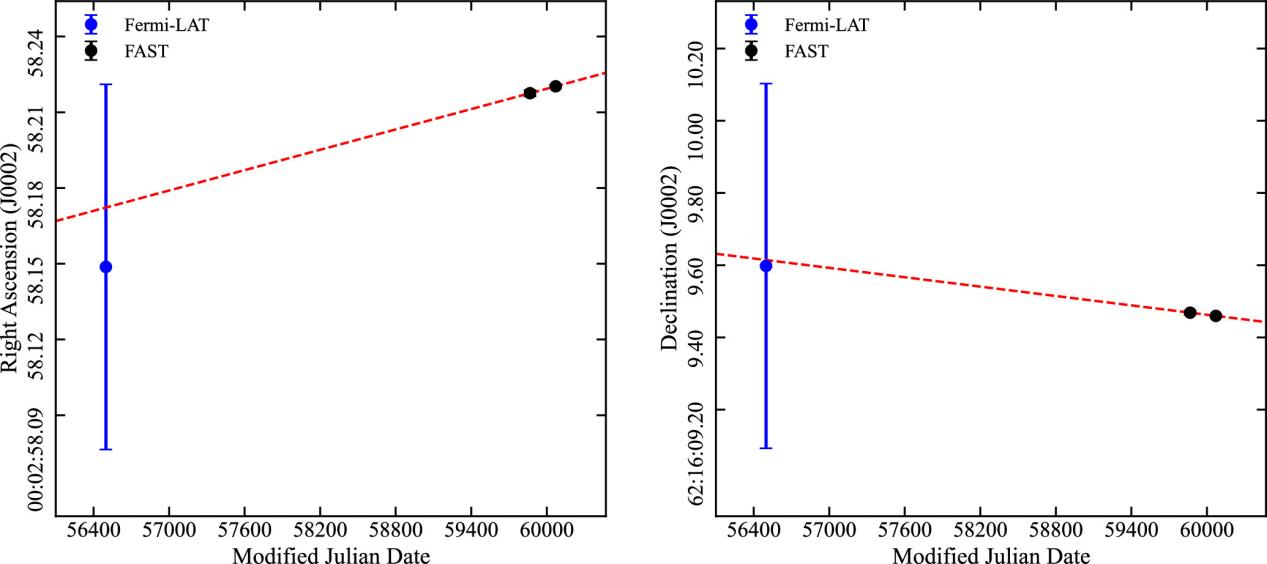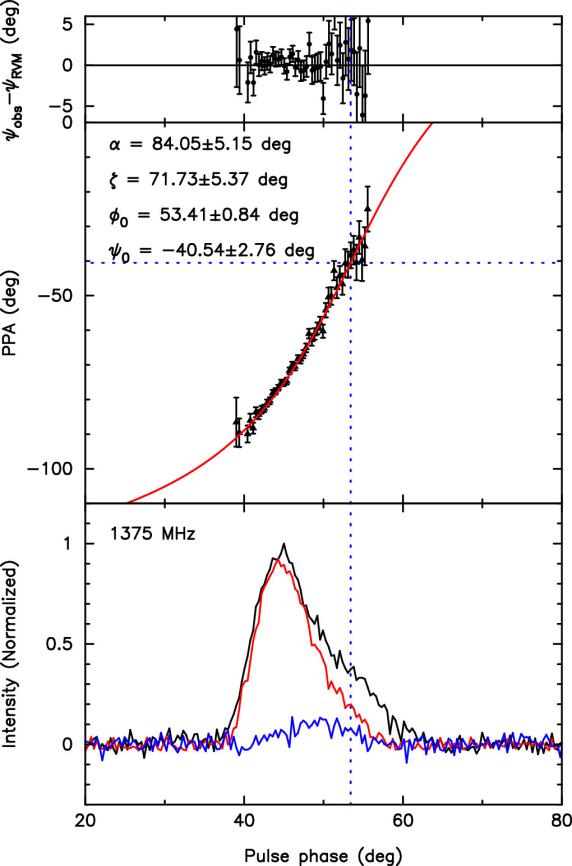

New Findings of A Young Pulsar’s Timing and Polarization
Recently, WEI Yu, a master’s student trained jointly at the Xinjiang Astronomical Observatory (XAO) of the Chinese Academy of Sciences and Xinjiang University, under the guidanceof WANG Na and YAO Jumei, has made breakthrough progress in the timing and polarization studies of the young pulsar PSR J0002+6216. By combining data from the Five-hundred-meter Aperture Spherical radio Telescope (FAST) and the Fermi Large Area Telescope (Fermi-LAT), the research team reported their results inThe Astrophysical Journal (ApJ, 2025, 984, 64).
PSR J0002+6216 is a gamma-ray pulsar discovered by Fermi-LAT. In 2018, the Effelsberg radio telescope detected its faint radio emission and provided a dispersion measure, though no polarization measurements were obtained. Based on ten years of Fermi-LAT data, Schinzel et al. (2019) suggested that PSR J0002+6216 is a hyper-velocity pulsar (with a velocity of about 1600 km/s) associated with the supernova remnant (SNR) CTB 1, earning it the nickname “the cosmic sprinter.”
However, in 2023, Bruzewski et al. employed very long baseline interferometry (VLBI) to show that PSR J0002+6216 is instead a normal-velocity pulsar (about 335 km/s). Therefore, high-precision timing with FAST is essential for resolving the discrepancies in velocity measurements, while sensitive polarization observations are crucial for determining the spin orientation and exploring its connection to the proper motion.
Since 2020, researchers at XAO have been conducting long-term monitoring of PSR J0002+6216 with FAST. By combining four years of FAST data with nearly sixteen years of Fermi-LAT observations, they detected two glitches in this pulsar for the first time: a small glitch in 2019 and a large glitch in 2024, the latter showing a clear exponential recovery. More importantly, high-precision timing enabled accurate measurements of the pulsar’s position and proper motion, yielding a total proper motion of 39.05 mas/yr with a position angle of 113.76°. Owing to FAST’s exceptional sensitivity and long-term stability, the precision of these results was greatly enhanced. The timing measurements of the proper motion not only agree well with VLBI observations but also rule out the earlier suggestion that PSR J0002+6216 is a hyper-velocity pulsar.
Using FAST, the researchers also obtained the first measurement of the pulsar’s rotation measure (RM), −179.16 rad/m² and updated its dispersion measure. By applying the rotating vector model (RVM), they determined the orientation of the pulsar’s spin axis in three-dimensional space and measured its projection angle on the sky plane to be about 90°. A comparison with the proper motion direction revealed a misalignment of about 23°. This finding provides new observational evidence for understanding the formation of pulsars and the relationship between their spin and space velocity.
According to the researchers, this study confirms through timing analysisthat PSR J0002+6216 is a young pulsar with normal-velocity. If it is indeed associated with the supernova remnant CTB 1, its kinematic age inferred from its current position and proper motion would be about 47.6 kyr. Future work will require a larger sample of high-velocity pulsars to further investigate the relationship between pulsar spin axes and velocity directions.
These results not only deepen our understanding of pulsar kinematics but also open new perspectives for exploring the dynamics of supernova explosions and the origin of neutron stars.
This work was supported by grants from the National Natural Science Foundation of China and the National Key R&D Program of China.

Figure 1. Thepositionsin RA and DEC of PSR J0002+6212 with time.. Blue and black points represent the Fermi and FAST data, respectively, while the red dashed line indicates the best-fit proper motion.

Figure 2. Polarization profile of PSR J0002+6216 at 1375 MHz. The bottom panel shows the pulse profile, the middle panel presents the observed polarization position angles, and the top panel displays the fitting residuals.
Attachment Download: